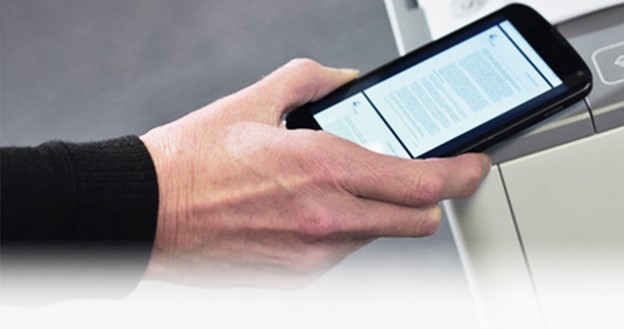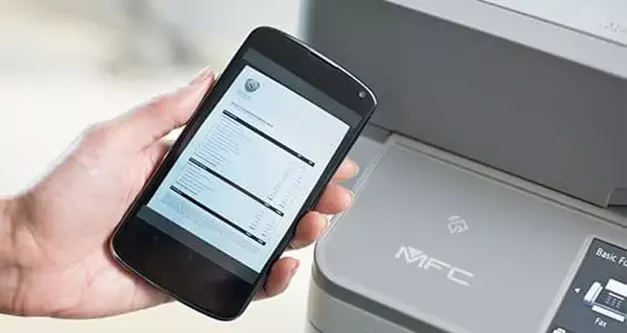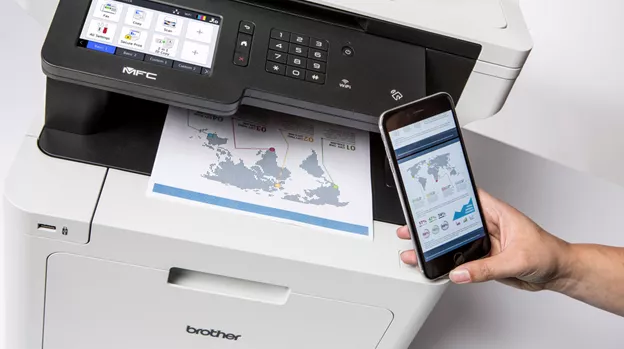
NFC Printing: A Quick and Easy Way to Print from Your Mobile Device

Excited to experience a convenient and efficient printing with an NFC-enabled printer directly from your device?
We know how easier and more efficient it is to be able to print using your mobile or tablet rather than logging-on to your computer or laptop or getting confused by the intricate process of setting up a wireless printer!
The advantages that an NFC-enabled printer can introduce to your home or workplace are numerous. Read on to understand how this technology works and how to make use of it.
What is NFC printing?
As the name implies, NFC printing or Near Field Communication printing involves establishing wireless network connectivity between a printer and a mobile device when they are in proximity. This employs short-range wireless technology that is commonly found in modern smartphones, tablets, and similar devices.
With this technology, you can practically go towards the printer, tap your device against it, and see your printouts come of out from the printer with just a few clicks. NFC technology simplifies printing process without the need for a PC or a laptop.
How to print from Android mobile devices using NFC printing
To use NFC printing, both your printer and mobile device muse be equipped with Near Field Communication (NFC) technology. This article will walk you through the process of activating this feature on both devices.
Activating NFC on Your Device
1. Confirm NFC support on your Device
First, check whether your device supports NFC. Majority of recent smartphones and tablets are NFC-enabled. You can verify this by searching “NFC” in your device.
2. Enable NFC on your device
You
may enable this by following these steps:
a. Access "Settings" on your device.
b. Choose "Network" or "Connections."
c. Locate the "NFC" option.
d. Activate the “NFC” option.
Take
note that some options or terms may differ depending on the device you are
using.
Once NFC is enabled on your mobile device, shift your attention to the printer.
Using an NFC-enabled Printer
1. Check NFC support on the printer
Check for printer’s NFC support: Look for the NFC icon on the printer to identify NFC-enabled models. This icon indicates where you should position your device for establishing a connection.
2. Enable NFC on Brother printer
To enable NFC on Brother printer, follow these steps:
a. Access "Settings" on your device. This usually looks like a screwdriver icon.
b. Choose "Network" or "Connections."
c. Click on "NFC" option.
d. Toggle the switch “on” to enable
3. Install and use Brother iPrint&Scan App for print selection
To print via NFC on a Brother printer, you’ll need to install the Brother iPrint&Scan app on your device. If printing a photo or document, ensure that the memory card inserted contains the file you need.
To select the print job:
a. Open the launcher on your device
b. Tap the Brother iPrint&Scan icon (read and accept license terms) .
c. Choose the document for printing
4. Establish NFC Connection and Print
When the Print Preview screen appears, place your mobile device near the NFC icon on your Brother printer, aligning both NFC tags.
Once connected, a sound will come confirm it, and “Touch to beam” will show on your mobile screen. Tap your device’s screen to initiate printing while keeping proximity.
NFC Printing in Enhancing Productivity
NFC printing’s popularity stems from its effortless and convenient nature. Its swift and seamless connection is particularly acknowledged in enhancing business productivity through the quick tap-and print process.
Brother’s NFC-Enabled Printers
Looking for the ideal NFC-enabled printer for your home or office? Explore some of Brother’s top printers equipped with NFC features!
Inkjet Printers
Laser Printers
Brother International Gulf FZE offers a wide range of multifunction printers, scanners, sewing machines, and label printers. As the central hub, it manages a vast network of authorized distributors across the Middle East, Levant, and substantial parts of Africa, including North Africa, ensuring accessibility and distribution.






.webp?h=1000&iar=0&w=2340&rev=59b40aa34f914595945d88e80834bda0)